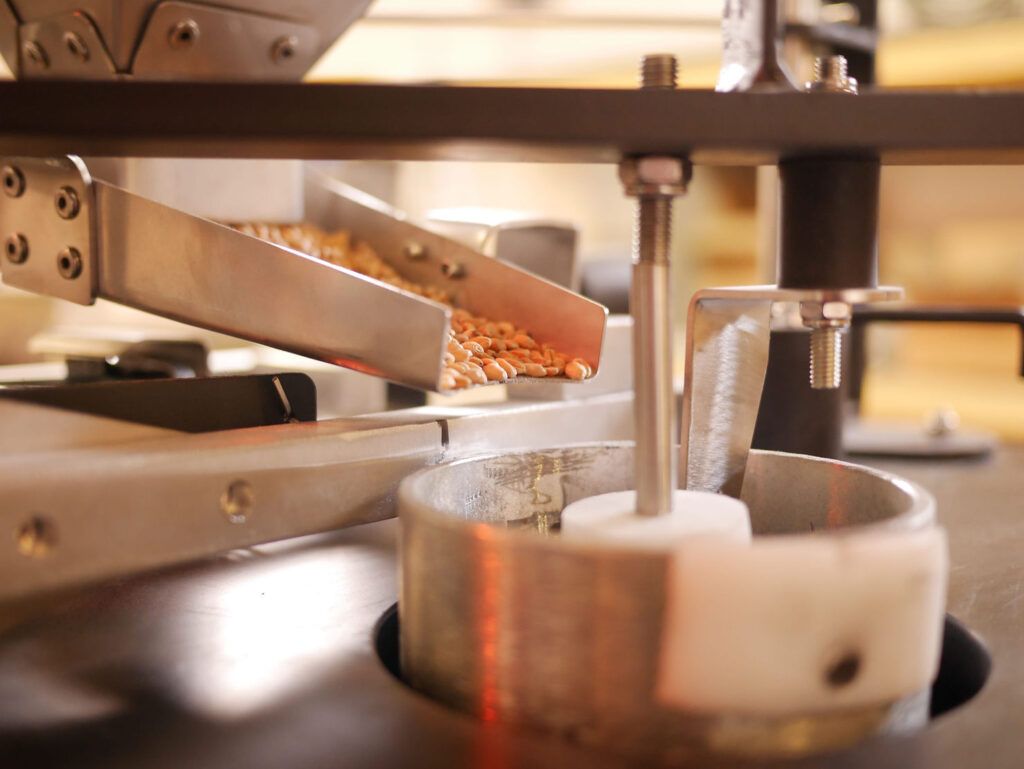If you’re a cereal farmer or a baker, and you want to produce your own flour on the farm and become completely independent, you need to take things one step at a time. Every project is unique, which is why you need to turn to qualified professionals, who will support you from A to Z in the acquisition of your professional flour mill: from the choice of mill, to training, to the layout study, to get it right, you need to define your objectives precisely! Here are the 6 secrets to making a success of your project and getting into the flour-making business with peace of mind.
If you’re short of time, here’s a quick summary of this article with all the questions you need to ask yourself:
- What type of flour do I want to make? need to make? for what reasons?
- How many kilos or tonnes of flour do I need, and how often?
- How many people can look after the mill in addition to their daily tasks?
- Do I need options to help me, for example so that the flour is automatically bagged while I’m doing something else?
Choosing the right mill
Choosing the professional flour mill that’s right for you involves a number of stages, and depends on a number of factors.
The type of flour you want to produce
The first question to ask yourself is this:
What quality of flour do I want/need to produce?
- Artisanal flours ?
- White flour ?
- Bise flour ?
- Semi-complete flour ?
- Wholemeal flour ?
And the question arises all the more today, with consumers’ growing interest in healthy, nutritious foods. So when it comes to making bread, biscuits, pastries, viennoiseries, brioche and galettes, it’s essential to use quality flour that retains all its nutritional properties.
We recently wrote an article on this subject: ‘Which sieve should I choose depending on the flour I want to make with my Astréïa mill?’

Unfortunately, finding a professional flour mill that respects grains is hard to come by. And with good reason: traditional stone mills, or ‘worse’ roller mills, which are the most common on the market, crush the grain. The grinding process, coupled with the high speed of rotation, oxidises the grain, and the white flour that comes out of the mill is virtually devoid of its nutritional properties.
To preserve the proteins, vitamins, minerals, calcium and amino acids in cereals and obtain a flour rich in fibre, you need to turn to the Astrié mill: the grain is not crushed, but completely unrolled. In this way, you produce healthy, easily digestible baker’s flour that’s interesting both for its nutritional qualities and its taste!
Large or small spelt, rye, wheat, durum wheat, buckwheat, soft wheat, chestnut flour: process the grains you want, but put quality at the heart of your production processes!
An update on your budget
Buying a flour mill is an investment: for an Astrié mill with a 50 cm grinding wheel, you should expect to pay around €8,500 excluding VAT. Sometimes the mistake is to look for second-hand Astrié flour mills: they’re available more quickly (because it takes several months to actually make an Astrié mill), but they’re also more expensive because they’re rare!
So if your project is urgent, speak to a qualified professional about it as soon as possible!
Performance targets
To produce flour on the farm and find the right mill, you need to ask yourself the question of yield.
The Astrié mill manufactured by Astréia allows you to achieve an extraction rate of 80% in a single pass. With a grindstone 50 cm in diameter, you can produce 15 kg of flour per hour. The large 1 m diameter model lets you double your output and produce 30 kg of flour per hour.
The most?
Thanks to the extraction and bagging options, you can produce continuously, without wasting any time! If you want to be self-sufficient in flour production, this type of mill already offers you a very attractive yield.
Matching your objectives with the layout of the mill
This is an essential step if you want to produce flour on your own farm. The location will depend on your objectives, the cereals you process, the activities you carry out on site, the layout of your premises, public access, etc.

To give you a clearer idea, here are the three recommendations to follow if you want to install an Astrié mill at the heart of your farm or business:
- It must be installed on a flat slab
- Positioned on a masonry support
- With ground anchor bolts
We explain why in our article dedicated to site surveys.
Testing your cereal in the mill
To ensure that the mill you select is the most suitable for your project, it is essential to test the cereals to be ground on the professional mill in question.

This will allow you to get to grips with the mill and understand everything about how it works, step by step. What’s more, you’ll know whether your grain is dry enough to be used in the professional mill of your choice, so you can maximise your yield and be as efficient as possible! In this way, depending on the result you want to achieve, the manufacturer can advise you on the settings to be made.
Would you like to start producing high-quality, wholemeal flour that’s rich in protein and flavour? The Astrié mill is the place to start! With the right support, you’ll finally succeed in creating a bread flour that meets your requirements and those of your consumers!



